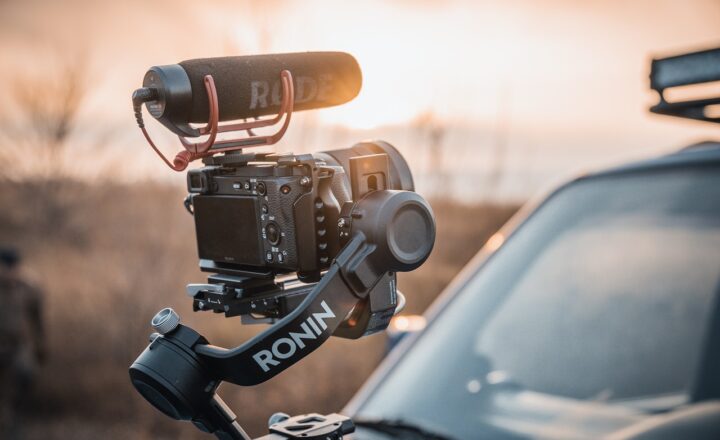How to Start a Podcast: A Step-by-Step Guide for Beginners
November 13, 2024

Podcasting has exploded in popularity over the past few years, evolving from a niche hobby to a mainstream medium that offers endless possibilities for creators. Whether you want to share your passion, reach an audience, or even monetize your content, starting a podcast is a rewarding venture. In this comprehensive guide, we’ll walk you through the process of launching your own podcast, step by step.
1. Why Start a Podcast?
Podcasts provide an intimate and informative medium that many people enjoy. Here are some compelling reasons to start a podcast:
- Flexibility: You can record episodes from anywhere, allowing for a flexible recording schedule that fits your lifestyle.
- Build an Audience: By sharing valuable content, you can grow a loyal audience who trusts and values your insights.
- Monetization Opportunities: With a dedicated listener base, you can explore sponsorships, merchandise, and listener donations.
- Creative Expression: Podcasting allows you to express your ideas creatively and engage with topics you are passionate about.
Whether you’re looking to showcase your expertise or share your storytelling abilities, a podcast can be an excellent platform.
2. Defining Your Podcast Concept
Before diving into the technical aspects, it’s vital to establish a clear concept for your podcast. Consider the following:
- Identify Your Niche: Focus on a specific topic or theme that interests you and resonates with your target audience. Popular niches include business, technology, health, storytelling, and more.
- Understand Your Audience: Think about who your ideal listeners are. What problems do they face? What topics do they want to learn about? Tailor your content to their needs.
- Choose Your Format: Decide if your podcast will be a solo show, co-hosted, interview-based, or a roundtable discussion. Formats can also include narrative storytelling, educational lessons, or a mix of styles.
Creating a well-defined concept will help guide your content creation and attract listeners.
3. Planning Your Episodes
Once your concept is set, start planning your episodes. Here are some tips:
- Create an Episode Outline: Outline the main topics and points you want to cover in each episode. This will help keep your content organized and flowing smoothly.
- Script Your Intro and Outro: Prepare a brief introduction and conclusion for your episodes. This creates a professional feel and helps you connect with your audience.
- Establish a Release Schedule: Decide how often you’ll release new episodes, whether it’s weekly, bi-weekly, or monthly, and stick to that schedule to maintain audience engagement.
Consistency is key to building a loyal podcast audience, so plan accordingly.
4. Recording Your Podcast
Now comes the fun part—recording your episodes! Here’s how to get started:
- Select Your Equipment: Invest in a quality microphone, headphones, and recording software. USB microphones like the Audio-Technica ATR2100x and Blue Yeti are popular choices for beginners.
- Choose a Recording Environment: Find a quiet space free from background noise. A padded room or closet works wonders in reducing echo and improving audio quality.
- Use Recording Software: Popular recording software includes Audacity (free) and GarageBand (for Mac users). Learn how to use the software to record, edit, and enhance your audio.
Good audio quality is crucial, so take the time to set up your recording environment properly.
5. Editing Your Podcast
Editing is where you can polish your audio and enhance the listener experience. Here’s how:
- Cut out Mistakes: Review your recording and edit out any mistakes, long pauses, or unnecessary filler words to keep your content engaging.
- Add Music and Effects: Consider adding intro and outro music to make your podcast feel more professional. Websites like AudioJungle or Epidemic Sound offer royalty-free music tracks.
- Export Your Audio: Save your edited podcast as an MP3 file. This format is universally compatible for podcasting platforms and easy to compress for faster uploads.
The editing process can take time, but it significantly enhances your podcast’s overall quality.
6. Hosting Your Podcast
After recording and editing, it’s time to host your podcast. Here’s what you need to consider:
- Choose a Podcast Hosting Platform: Platforms like Libsyn, Podbean, and Anchor make it easy to upload and distribute your episodes to various podcast directories (i.e., Apple Podcasts, Spotify, Google Podcasts).
- Set Up Your Podcast RSS Feed: Your hosting service will provide you with an RSS feed, which is essential for syndicating your podcast to different platforms. Ensure it’s correctly set up for seamless distribution.
- Add Show Artwork and Descriptions: Create eye-catching cover art that meets the specifications of podcast platforms. Write engaging show descriptions that accurately convey your podcast’s content and purpose.
Selecting the right hosting service simplifies podcast distribution and amplifies discoverability.
7. Launching Your Podcast
With all elements in place, it’s finally time to launch your podcast. Here’s how:
- Build Anticipation: Create a pre-launch marketing plan to promote your podcast on social media, reach out to friends and family, and encourage them to share your content.
- Launch With Multiple Episodes: Consider launching with three episodes to give listeners a taste of your content and to encourage binge listening.
- Gather Feedback: Encourage listeners to provide feedback and reviews after your first few episodes. Use their input to improve and refine your content as you grow.
Launching your podcast with a strong marketing strategy sets you up for long-term success.
8. Promoting Your Podcast
Consistency in promotion is necessary to build your listener base. Focus on these strategies:
- Leverage Social Media: Share snippets, quotes, and episode highlights on platforms like Instagram, Twitter, TikTok, and Facebook to engage potential listeners.
- Guest Appearances: Collaborate with other podcasters and be a guest on their shows to reach new audiences.
- Engage with Your Audience: Create a community around your podcast. Engage listeners through Q&A sessions, live shows, and listener feedback through email or social media.
Building a community around your podcast increases loyalty and engagement over time.
Conclusion
Starting a podcast is an exciting journey that requires passion, determination, and creativity. By following the steps outlined in this guide, you’ll be well on your way to launching your very own podcast. Remember to stay consistent, engage with your audience, and continually refine your content for the best possible experience. Happy podcasting!







